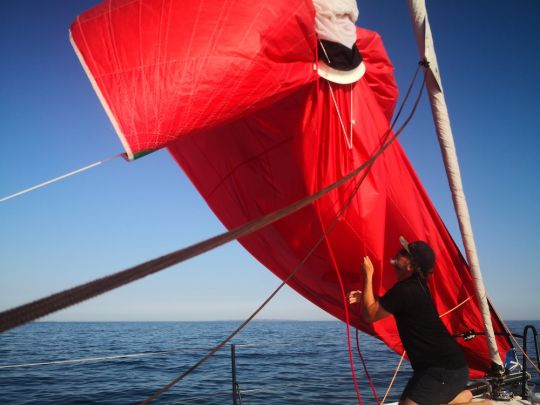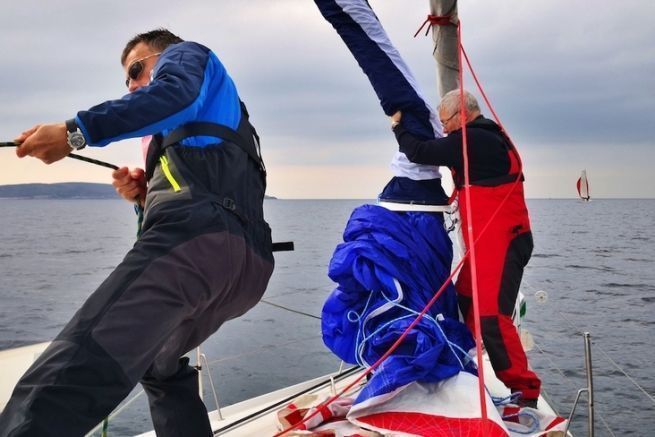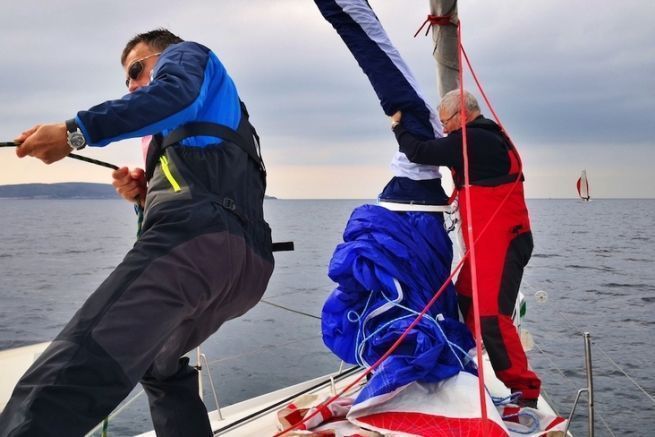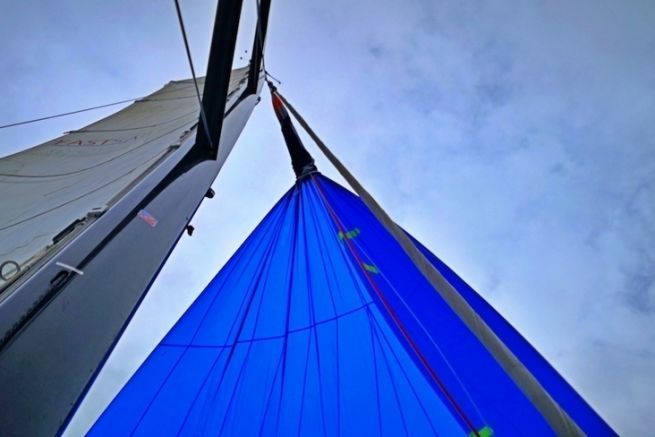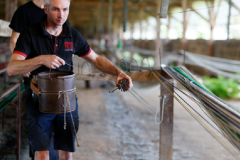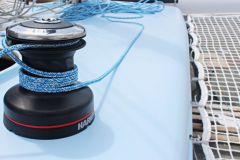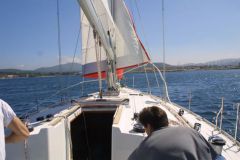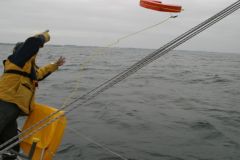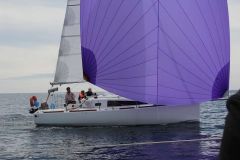The spinnaker sock is additional gear for a sail that already has a lot of it. If all this stuff scares you a little, lay everything flat on the pontoon by attaching the halyard point to a cleat. That way you can manipulate the toggle to move the sock up and down as many times as you need. It's a good grip.
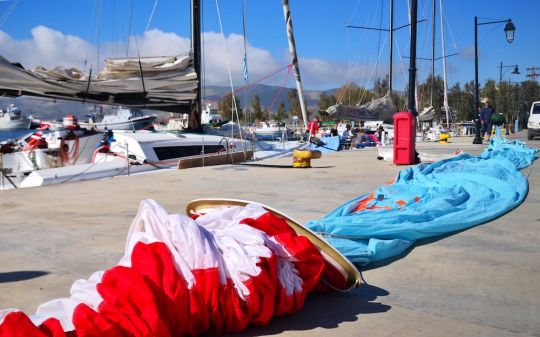
Then, it is necessary to train at sea in light weather and repeat the maneuver several times, preferably alone, to get a feel for the problem. With this experience, it will be easier to give relevant instructions to the crew.
Preparation of the spinnaker sock
- Unlike a spinnaker "in the bag", the sock is prepared exclusively on the front deck of the sailboat. As well as doing it in relative comfort - with a very light apparent wind - it is therefore with the wind behind that the maneuver is prepared (160°).
- In order to have more working space and a better visibility, it is preferable to carry out the maneuver with the genoa completely rolled up
- If conditions permit, why not spread the sock out on the foredeck, but be careful not to let a piece of cloth go into the water, as the whole spinnaker would follow it overboard.
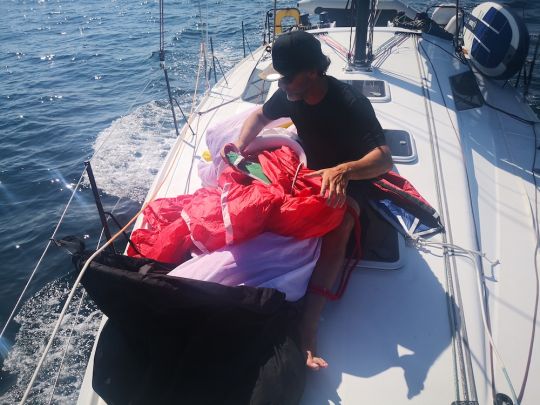
How to rig the sock?
- Most of the time, you will only have to take the sock out of your bag to hit the halyard and sheeting maneuvers (and the arm if it is a symmetrical spinnaker)
- Like a classic spinnaker, you rig the sock to send it downwind preferably. With a little more experience, you can also send the sock upwind and then pass it in front of the forestay.
- We start by hitting the halyard point on the sock. If everything seems complicated and you are not sure, you can install the sheets once the sock is hoisted. You can see more clearly in the assembly.
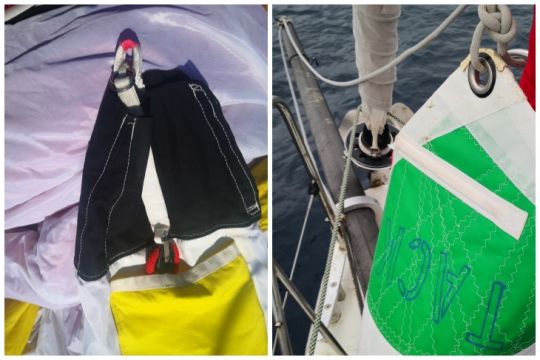
Ready to hoist?
- A crew member on the halyard is in charge of hoisting the spinnaker. While a second crew member, on the foredeck, guides the sock. He will thus prevent the sock, dragged by its weight, from escaping and dancing around the boat.
- Make sure the sock does not twist on itself. The sock should have a colored stripe to show any twists. If the sock is properly stored in an accordion fashion in its bag, there is little risk of twisting.
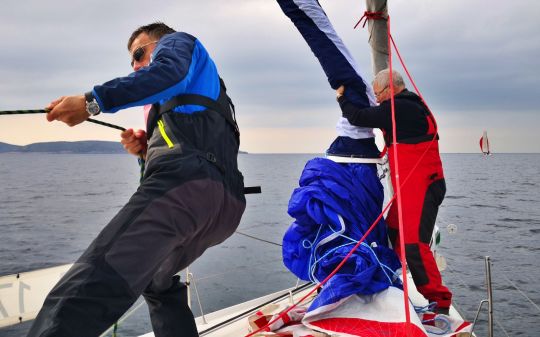
A final check
- Once the halyard crewman has hoisted the lead sock, the foredeck crewman keeps it down with the back and forth while the cockpit crewmen put the maneuvers under tension.
Asymmetrical spinnaker: Tacked to the bowsprit, sheet stretched
Symmetrical spinnaker: sheet stretched, spinnaker arm close to the spinnaker pole, stirred at 45°
- Now the spinnaker is ready to be sent. Since it is muffled, the situation is under control.
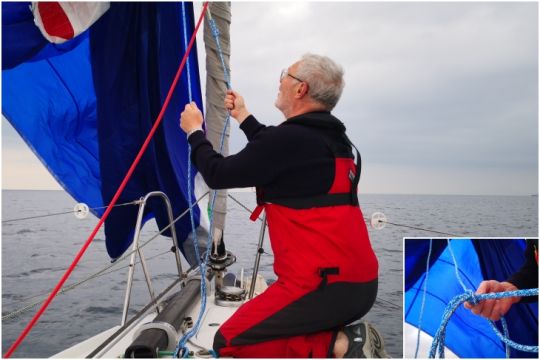
Ready to inflate?
- Before rolling up the sock, it is advisable to move away from the downwind and place the boat on the open sea, at 140/145° from the wind. This way, the wind will inflate the sail instead of making it turn around at the rhythm of the mainsail's whirlwinds.
- If everyone is ready, the bowman will be able to free the sail from its hindrance by rolling up the sock using the toggle. To maneuver properly, you must be on your knees and at the bow. Indeed, the arms and the head in the air at the same time leave little balance to the sailor.
- As soon as the wind catches in the sail, it inflates and pulls the sock upwards.
- During the maneuver, care must be taken to avoid any "shells" in the toggle end.
- Once the sock is rolled up at the head, the maneuver is hit - without tension - at the foot of the mast.
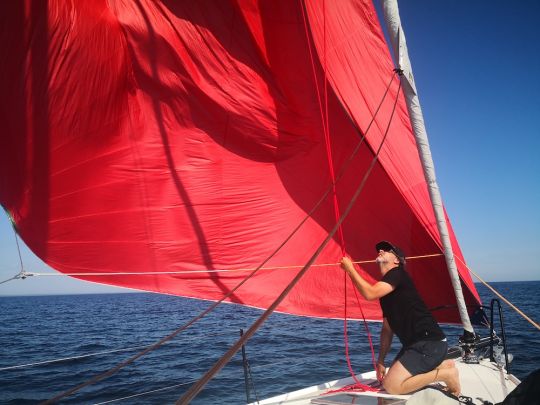
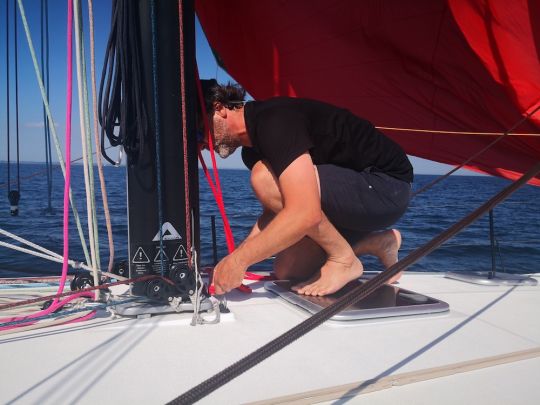
Ready to set up
- The lowering of the sock is very simple, it is the reverse procedure of the sending. We position ourselves once again at the bow and on the knees to maneuver the toe with the least friction possible.
- We make sure that the rope does not go around the forestay.
- When the wind is downwind, the spinnaker sheet must be let out completely so that it feathers. Without wind pressure, it will be easy to choke the spinnaker by lowering the sock to the deck.
- We will think of putting it in its bag in accordion by following the band of color.
